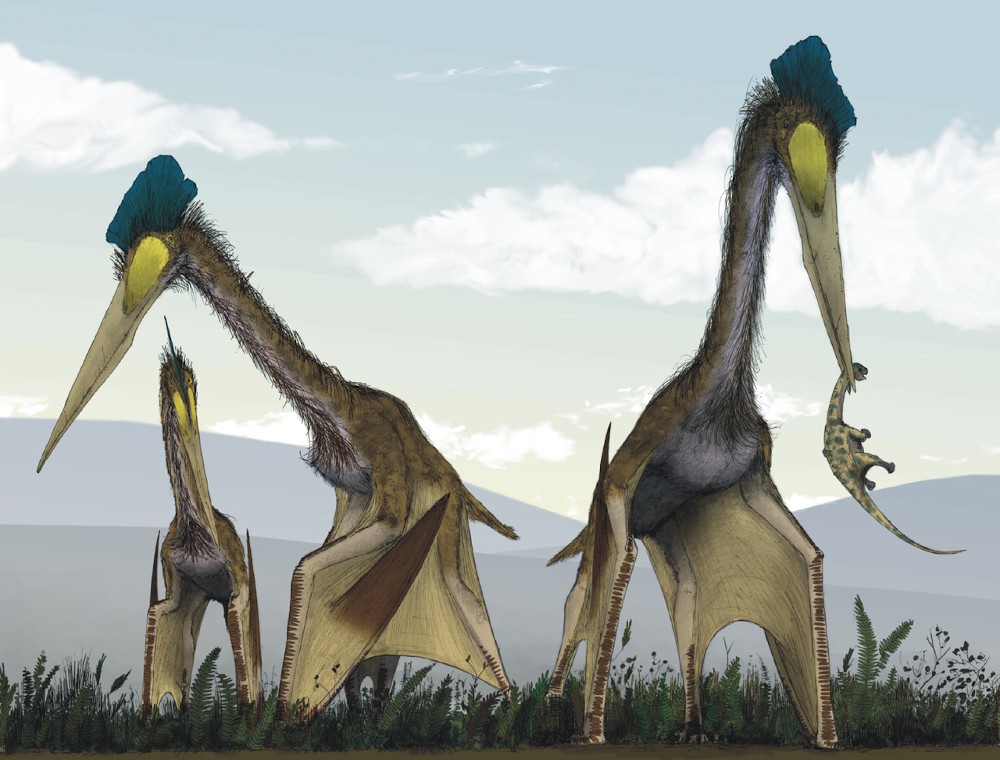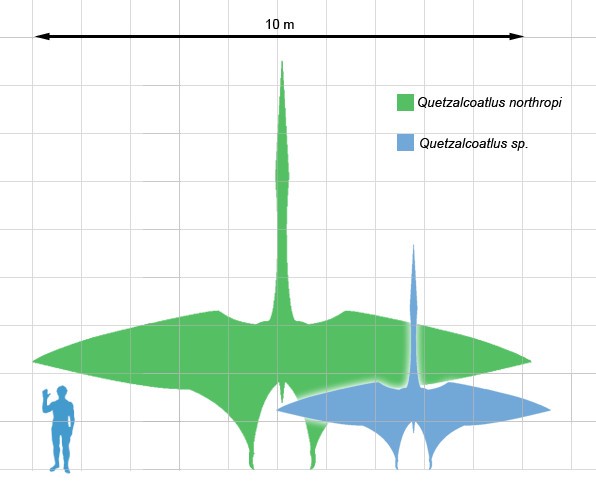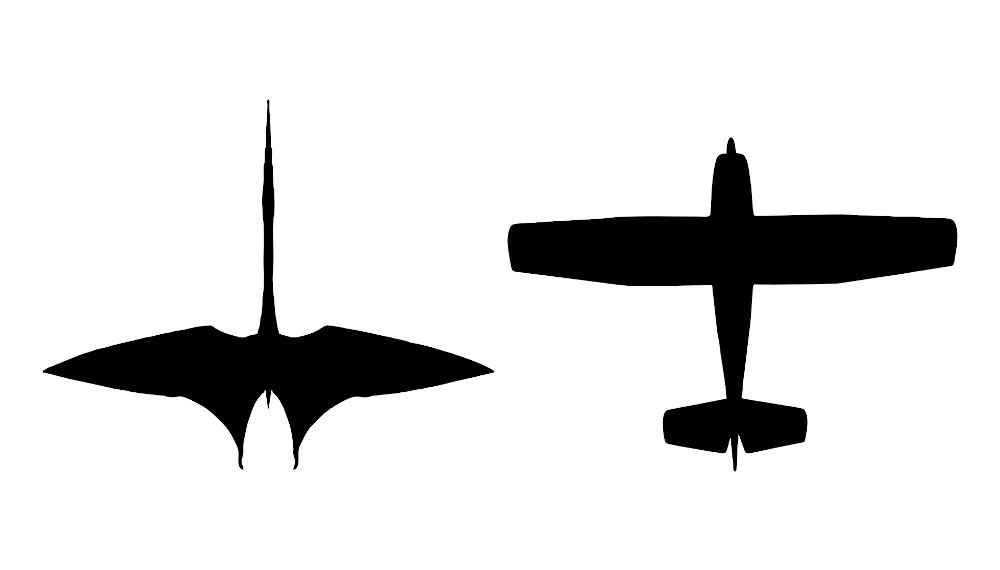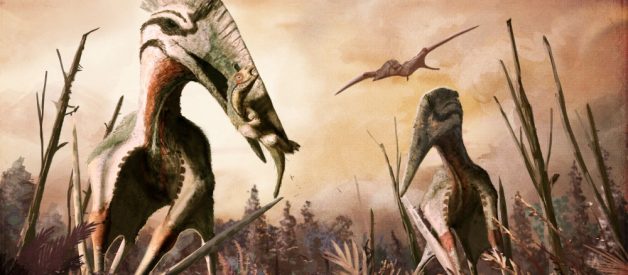
Quetzalcoatlus was the largest flying dinosaur and the largest flying creature ever to have existed. It stood as tall as a giraffe when it was on the ground.
What was Quetzalcoatlus?
 Quetzalcoatlus eating small dinosaurs. Image by By Mark Witton and Darren Naish ? Witton MP, Naish D (2008)
Quetzalcoatlus eating small dinosaurs. Image by By Mark Witton and Darren Naish ? Witton MP, Naish D (2008)
Quetzalcoatlus is named after the Aztec feathered serpent deity Quetzalcoatl. It was a dinosaur of the Late Creteaceous period, which was about 100 million to 60 million years ago (later than the large dinosaurs like T-Rex), in North America. While not technically a dinosaur, it was part of the family of pterosaurs which lived in that period was related to other large pterosaurs.
A few skeletons of Quetzalcoatlus have been found, including some rather complete skeletons. They show that Quetzalcoatlus was indeed a pterosaur, with a very large skull and it may have spent quite a bit of time hunting on the ground as well. Quetzalcoatlus lived in North America and most of the remains have been found in Texas.
 Two different species of Quetzalcoatlus compared with a full grown man. By Matt Martyniuk (Dinoguy2), Mark Witton and Darren Naish
Two different species of Quetzalcoatlus compared with a full grown man. By Matt Martyniuk (Dinoguy2), Mark Witton and Darren Naish
That would make Quetzalcoatlus?s wingspan, which is over 10 meters, making it about the same size as a private airplane, such as a Cessna.
 By The Nature Box ? CC BY-SA 4.0
By The Nature Box ? CC BY-SA 4.0
Getting an estimate on the weight of Quetzalcoatlus is much more difficult since we have no tissue samples and the bones have been petrified. Estimates range from 150lbs for a normal individual to nearly 1,000lbs. However, the consensus among paleontologists now is that an average individual weighed about 200?250 kg (440?550 lb).
Other Giants
As seen in the above photograph, there were actually two different sub-species of Quetzalcoatlus. The smaller one had a wingspan of around 18ft, making it about half the size. Originally, when they found the smaller skeletons, the idea was that they may be juvenile specimens of the same species. Supsequent research indicates, though, that they are a different sup-species. Quetzalcoatlus northropi is the large one and Quetzalcoatlus sp. is the small one.
In Europe, there was a very similar pterosaur, known as Hatzegopteryx, which was roughly the same size. It may have been slightly heavier and had a large head with a more pronounced crest running down the middle.
 Hatzegopteryx was roughly the same size as Quetzalcoatlus northropi. By Mark Witton
Hatzegopteryx was roughly the same size as Quetzalcoatlus northropi. By Mark Witton
Both species fed on small dinosaurs which could be up to the size of a human. In the case of Hatzegopteryx, it lived on an island of dwarf dinosaurs near present day Transylvania, Romania.

